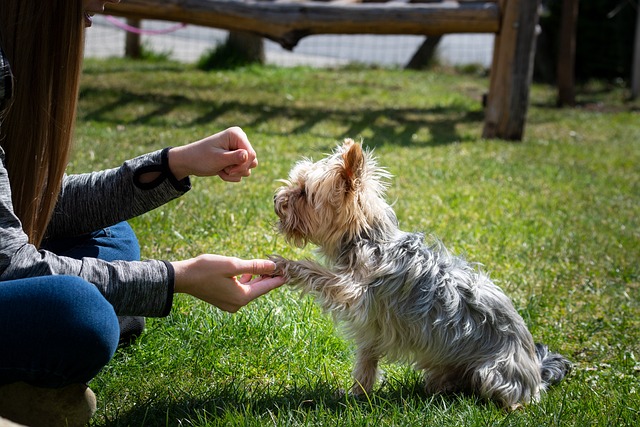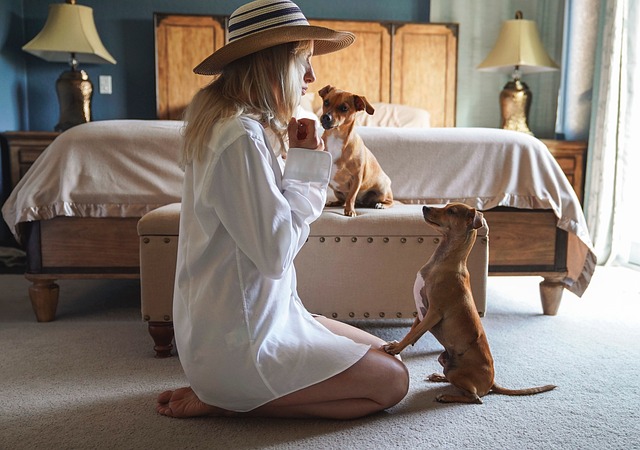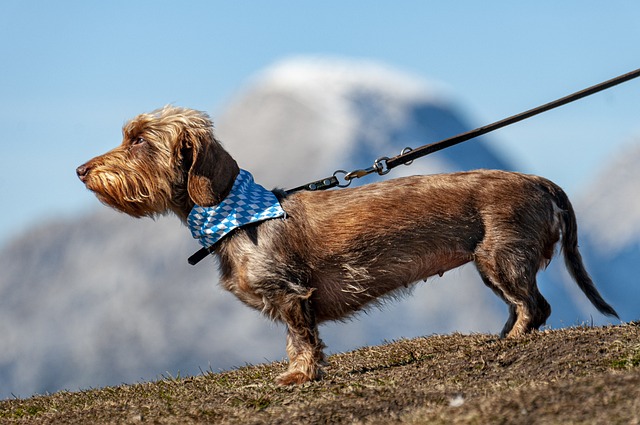House training your dog is one of the most important and rewarding things you can do for your furry friend. It can help you prevent accidents, keep your home clean, and build a strong bond with your dog. House training your dog may seem daunting, but it is not impossible. With some patience, consistency, and positive reinforcement, you can teach your dog to go potty outside in no time. Here are seven easy steps to housetrain your dog.
Step 1
- Pick a regular potty spot.
The first step to house-train your dog is to choose a designated spot outside where you want your dog to go potty. This can be a patch of grass, a corner of your yard, or a nearby park. The key is to be consistent and take your dog to the same spot every time you go outside. This will help your dog associate that spot with going potty and make it easier for them to learn.
Step 2
- Keep a consistent schedule.
The second step to house training your dog is to establish a regular routine for feeding, playing, and going outside. Dogs thrive on predictability and will learn to hold their bladder and bowels if they know when they will get a chance to go outside. Feed your dog at the same time every day, and avoid giving them snacks or treats between meals. Take your dog outside first thing in the morning, after every meal, after every nap, after every play session, and before bedtime. Try to go outside at least every two to four hours, depending on your dog’s age and size.
Step 3
- Supervise your dog’s behavior.
The third step to house training your dog is to keep an eye on your dog when they are inside the house. This will help you prevent accidents and catch any signs that your dog needs to go outside. Some common signs that your dog needs to go potty are sniffing, circling, whining, scratching, or squatting. If you notice any of these signs, take your dog outside immediately and praise them when they go potty. If you can’t supervise your dog, confine them to a crate or a small room with a baby gate. This will help your dog learn to control their bladder and bowels, as most dogs don’t like to soil their sleeping area.
Step 4
- Reward your dog for going potty outside.
The fourth step to house training your dog is to make going potty outside a positive and rewarding experience for your dog. Every time your dog goes potty outside, praise them enthusiastically and give them a treat, a toy, or a play session. This will reinforce the behavior and make your dog want to go potty outside again. Avoid scolding, yelling, or punishing your dog for going potty inside, as this will only make them fearful and confused. Instead, calmly clean up the mess with an enzyme cleaner and take your dog outside more often.
Step 5
- Deodorize accident spots.
The fifth step to house training your dog is to eliminate any traces of urine or feces from inside the house. Dogs have a strong sense of smell and will tend to go potty where they smell their previous accidents. To prevent this, use an enzyme cleaner to remove any odors from the carpet, furniture, or floor. Avoid using ammonia-based cleaners, as they can smell like urine to your dog, and encourage them to go potty there again.
Step 6
- Gradually increase your dog’s freedom.
The sixth step to house training your dog is to slowly give your dog more access to the house as they learn to go potty outside. Start by confining your dog to a small area, such as a crate or a room, and gradually expand their space as they prove themselves to be reliable. For example, you can let your dog roam in one room, then two rooms, then the whole house, as long as they don’t have any accidents. Always supervise your dog when they are in a new area and take them outside frequently.
Step 7
- Be patient and consistent.
The seventh and final step to house training your dog is to be patient and consistent. House training your dog may take some time and practice, but it is not impossible. Don’t give up or get frustrated if your dog has some setbacks or accidents. Just stick to the routine and reward your dog for its progress. Remember, every dog is different, and some learn faster or slower than others. The key is to be patient and consistent, and you will soon have a house-trained dog.
Conclusion
House training your dog is one of the best things you can do for your dog and yourself. It can help you prevent accidents, keep your home clean, and build a strong bond with your dog. By following these seven easy steps, you can teach your dog to go potty outside in no time. Remember, be patient, consistent, and positive, and you will soon have a happy and well-behaved dog.




